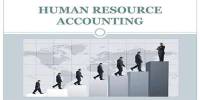Concept of Activity Based Costing (ABC)
The activity-based costing (ABC) system is a method of accounting you can use to find the total cost of activities necessary to make a product. It is a costing method that assigns overhead and indirect costs to related products and services. The traditional system of costing suffers from certain limitations. It fails to precisely assign the overhead costs into product units. Therefore the activity-based costing system has recently been developed to overcome the limitations of the traditional costing system. The activity costing system is based on the premise that activities make a product. However, some indirect costs, such as management and office staff salaries, are difficult to assign to a product. It supports performance management techniques such as continuous improvement and scorecards.
Activity-based costing (ABC) is the determination of product cost based on the activity needed for producing a product. It provides a more accurate method of product/service costing, leading to more accurate pricing decisions. The activities required to produce a product or render service consume a cost. Therefore, an insight into the expenses consumed by all those activities performed for the manufacturing of finished products and sale is very important. The ABC system assigns costs to each activity that goes into production, such as workers testing a product. A number of researched studies have shown the increasing utility of activity-based costing on overhead allocation and apportionment for product cost determination. This provides the business with better information to make value-based and therefore more effective decisions.
ABC costing means a method of assigning overhead costs to processes or products that generate or consume the costs. ABC is used to get a better grasp on costs, allowing companies to form a more appropriate pricing strategy. Product cost determination under activity-based costing is made on the basis of cost drivers required for producing goods or delivering services. To use activity-based costing, you must understand the process for assigning costs to activities. Activity-based costing is becoming more effective in the costing of multi-products produced by industries and executing customers’ orders. ABC was first defined in the late 1980s by Kaplan and Bruns. It can be considered as the modern alternative to absorption costing, allowing managers to better understand the product and customer net profitability.
Activity-based costing (ABC) is an effective management approach for distributing and controlling the overhead costs. ABC enables the effective challenge of operating costs to find better ways of allocating and eliminating overheads. It is mostly used in the manufacturing industry since it enhances the reliability of cost data, hence producing nearly true costs and better classifying the costs incurred by the company during its production process. Overhead analysis can be made more accurate by using ABC techniques for a wide range of products, for product costing and profitability analysis, and for distribution and control of the overheads appropriately. This may limit the ability of managers to truly understand and identify the best business decisions about product pricing and targeted production levels.
















